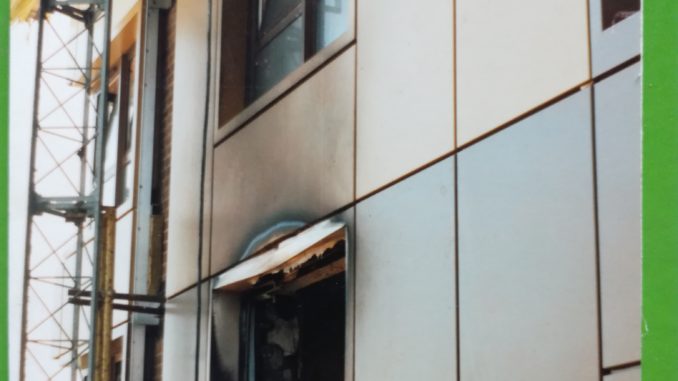
Summary
– Wall cladding: decorative effect for all exterior walls
– Two types of installation for wall cladding
– Wall cladding: frame installation
Cladding is a siding that can be used for different purposes for a building:
– wall cladding,
– ceiling panelling,
– exterior cladding.
Wall cladding: decorative effect for all rooms
Panelling is mainly used on walls for its insulating and decorative qualities while wall cladding naturally finds its place on all walls.
Cladding strips are sold in a multitude of sizes:
– dimensions: length (2 m to 4 m), width (from 7 cm) and thickness (from 7 mm),
– finishes: natural, waxed, painted, varnished or stained.
You can cover all the exterior walls with cladding strips; this tends to give more volume.
Two types of installation for wall cladding
The installation of wall cladding is simple, hence its frequent presence on the walls of our homes.
There are two types of installation:
– direct or glued installation: the cladding boards are glued directly onto the support,
– frame installation: the wainscot boards are fixed to a wooden frame, with the possibility of installing insulation between the support and the boards if the wall is exterior.
Glued installation: not recommended for wall cladding
If you opt for glue-down installation, you must make sure that your substrate is:
– rigorously flat: under the effect of slight stress to correct a flatness defect, the board deforms without difficulty, and the final result is not satisfactory,
– not brittle: otherwise the boards will peel off over time,
– healthy and dry: for good adhesion of the boards, but also so that the assembly does not suffer from a total absence of air circulation between the wall and the panelling.
Good to know: With this type of installation, only the decorative aspect is sought: there is no insulation possible.
Wall cladding: the advantages of frame installation

The implementation of a framework presents no difficulty for a good DIY enthusiast.
This type of installation has many benefits:
– quick and easy installation: the boards are nailed on wooden strips (no glue),
– insulation: allows inserting an insulating material between the support and the boards,
– ventilation: allows for adequate air circulation between the substrate and the boards to avoid moisture,
– good durability: solidity and shock resistance.
The standard installation of wall cladding on a frame
The wooden strips framework must be flat and perfectly vertical to be controlled with precision using a plumb line. If the cleat location’s support has dents, eventually dig the wood of the cleat to adjust. If the support is not flat, use small shims between the batten and the wall to fill the gaps.
The cleats must be perpendicular to the direction in which the boards are installed. For instance:
– for horizontal strips: install them in staggered rows so that air can circulate easily from the bottom to the top,
– you should place the first and last strips about 5 cm from the floor and ceiling and any other edge of the wall section,
– the distance between the axes of these cleats must be between 40 and 60 cm: the cleats are fixed to the supporting support with screws and dowels.
Good to know: The framework must go around the openings if there are any. You will install additional cleats around doors and windows.
If the framing is to accommodate insulation, it must be installed around the openings.
If the wall cladding must contain thermal and sound insulation:
– the battens forming the framework must be of an appropriate height, to allow sufficient air circulation between the insulation and the slats: count 5 cm, You will avoid the appearance of humidity,
– the distance between the axes of these cleats is from 40 to 60 cm: they are fixed to the supporting support with screws and plugs,
– when installing the insulation, it can be held in place with string to facilitate its installation and prevent it from slipping over time.
Please remember to share your experience if you have already or you will be installing wall cladding. We would like to hear from you!

Leave a Reply